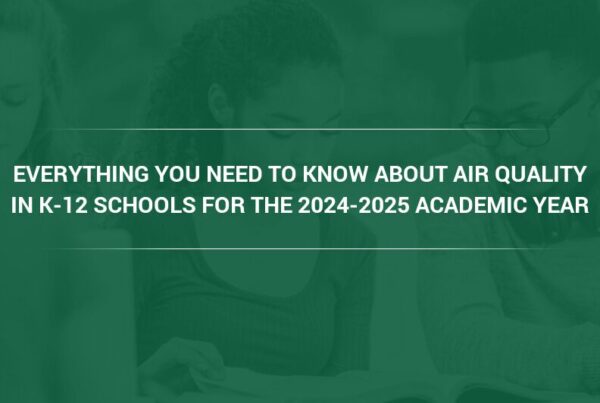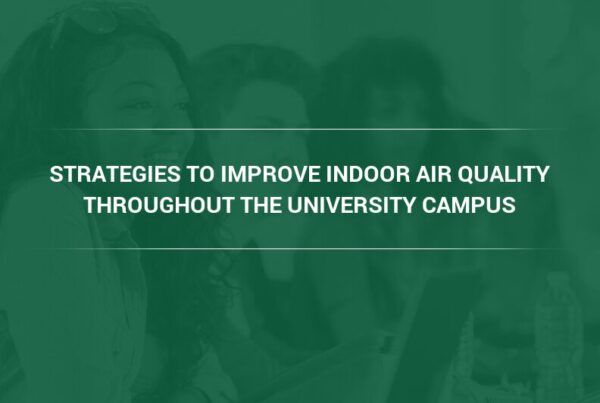Exposure to poor outdoor & indoor air quality, particularly at schools, is associated with childhood obesity. Learn how commercial air filtration systems and school air filters can help.
According to a study conducted by researchers from the Barcelona Institute for Global Health (ISGlobal), children who are exposed to air pollution, particularly at school, face a greater risk of being overweight and obese during childhood. The study highlights just how important commercial air filtration systems are in school buildings, particularly in districts where air pollution levels can go beyond the Environmental Protection Agency’s (EPA) air quality guidelines.
Link Between Child Obesity and Air Pollution
The study, which involved 2,660 children between age seven and 10 across 39 schools in Barcelona, was published in the journal Environment International and performed under the BREATHE project.
While other studies have already explored the relationship between air pollution levels and child obesity and overweight risk, these endeavors focused on air pollution at the home. In contrast, this ISGlobal study is the first to look at the relationship between obesity and overweight risk and air pollution levels found in schools, which similar to homes is a micro-environment where children spend the majority of their time.
Comparing Indoor Air Quality in Schools with Children’s Weight and Height
In conducting their research, the team collected data on the children’s weight and height to calculate each student’s body mass index and determine their overweight and obesity status. Next, the team used sensors to measure levels of outdoor pollution that affect the children’s outdoor and indoor air quality in schools and homes.
Specifically, the research team measured levels of nitrogen dioxide (NO2), elemental carbon (EC), as well as fine particulate matter (PM2.5) and coarse particulate matter (PM10).
Why Schools Need Industrial Air Filtration and Ventilation
What the researchers found adds to the growing list of reasons to have industrial air filtration and ventilation systems in schools.
According to the study’s first author Jeroen de Bont, a researcher at ISGlobal and IDIAP Jordi Gol, children who were exposed to moderate to high levels of air pollution—including fine particulate matter, ultrafine particulate matter, NO2, and EC—faced a greater risk of being overweight and obese compared to those exposed to lower pollution levels in their homes and schools.
De Bont explains that the mechanism linking air pollution exposure to overweight risk in children may be similar to the findings of certain animal studies, which show that toxic air can induce oxidative stress, inflammation, and insulin resistance—all factors that contribute to weight gain. These findings also prove that while ambient air filtration systems are usually associated with preventing lung diseases, they can also support overall health.
There are also several studies linking fine particulate matter, or PM2.5 which are particles equal to or less than 2.5 microns in diameter.
“Long-term exposure to ultrafine particles can induce respiratory and cardiovascular diseases. It increases the mortality rates for people living in highly polluted urban areas,” points out Camfil USA’s Charlie Seyffer, Manager of Marketing & Technical Materials for commercial air filters and 37-year ASHRAE member and active committee participant. “Below PM2.5, particles are more harmful because they penetrate deeper into the lung alveoli. They cross blood vessels walls, diffuse into the blood circulation to reach and affect organs function.”
This is why air pollution is also associated with problems like kidney disease, neurodegenerative disease, and certain cancers.
Why Children Can Benefit More from Air Purifiers
As per the American Lung Association, children are more susceptible to the negative health outcomes associated with air pollution and need home air purifiers because of the distinct behaviors and physiology.
For example, children are more active than adults and breathe in more air per volume of body weight. Children and infants also tend to breathe in through their mouths, which bypasses the body’s natural filtration system in the nose. Children also spend much more time outdoors than adults, especially during the summer when smog levels and plant allergens from pollen spikes.
Work with Industrial and Commercial Air Filtration Equipment Manufacturers
School and government officials concerned about this news can talk to industrial/commercial air filtration equipment manufacturers like Camfil USA to learn about the benefits of air filtration systems specifically designed for school buildings.
For more information on ways to improve the indoor air quality in schools, talk to the team at Camfil USA about the different commercial air filtration systems and air filters for schools and universities.
Lynne Laake
Camfil USA Air Filters
T: 888.599.6620
E: Lynne.Laake@camfil.com
F: Friend Camfil USA on Facebook



